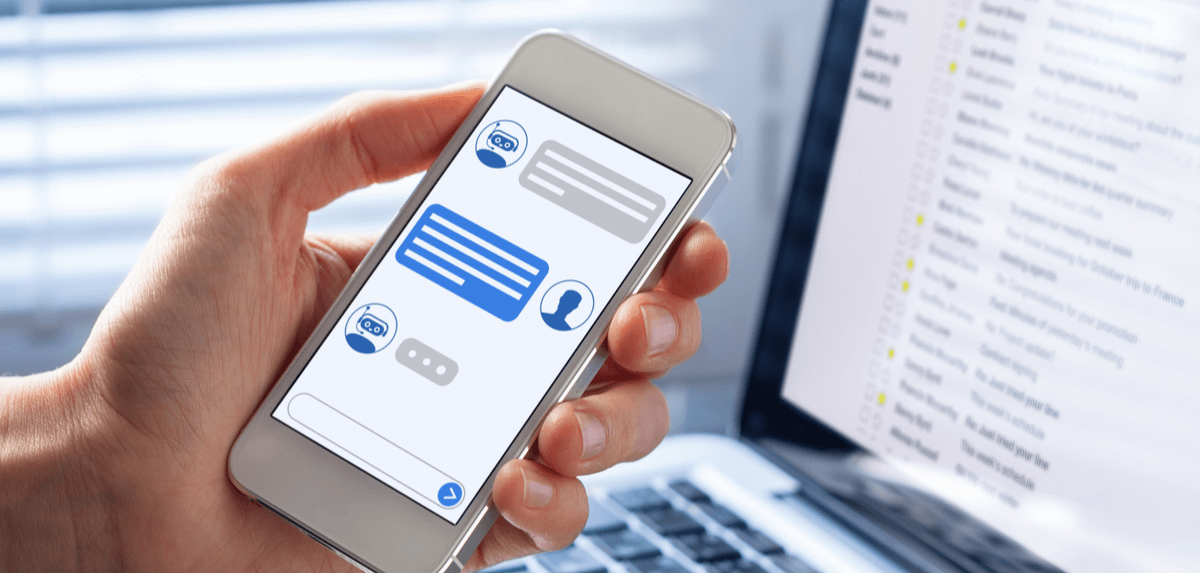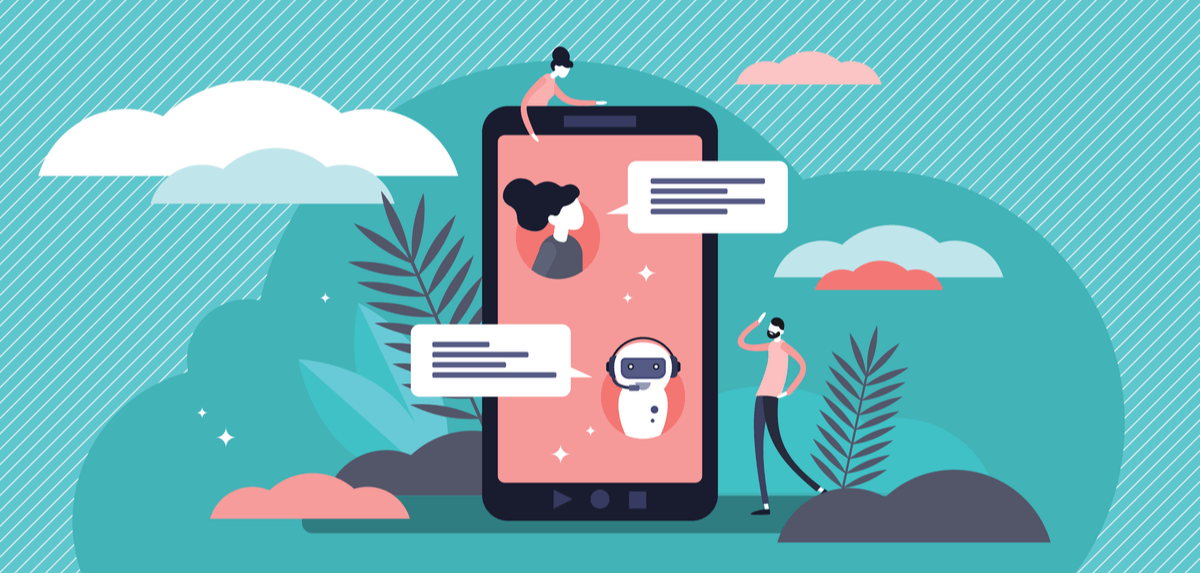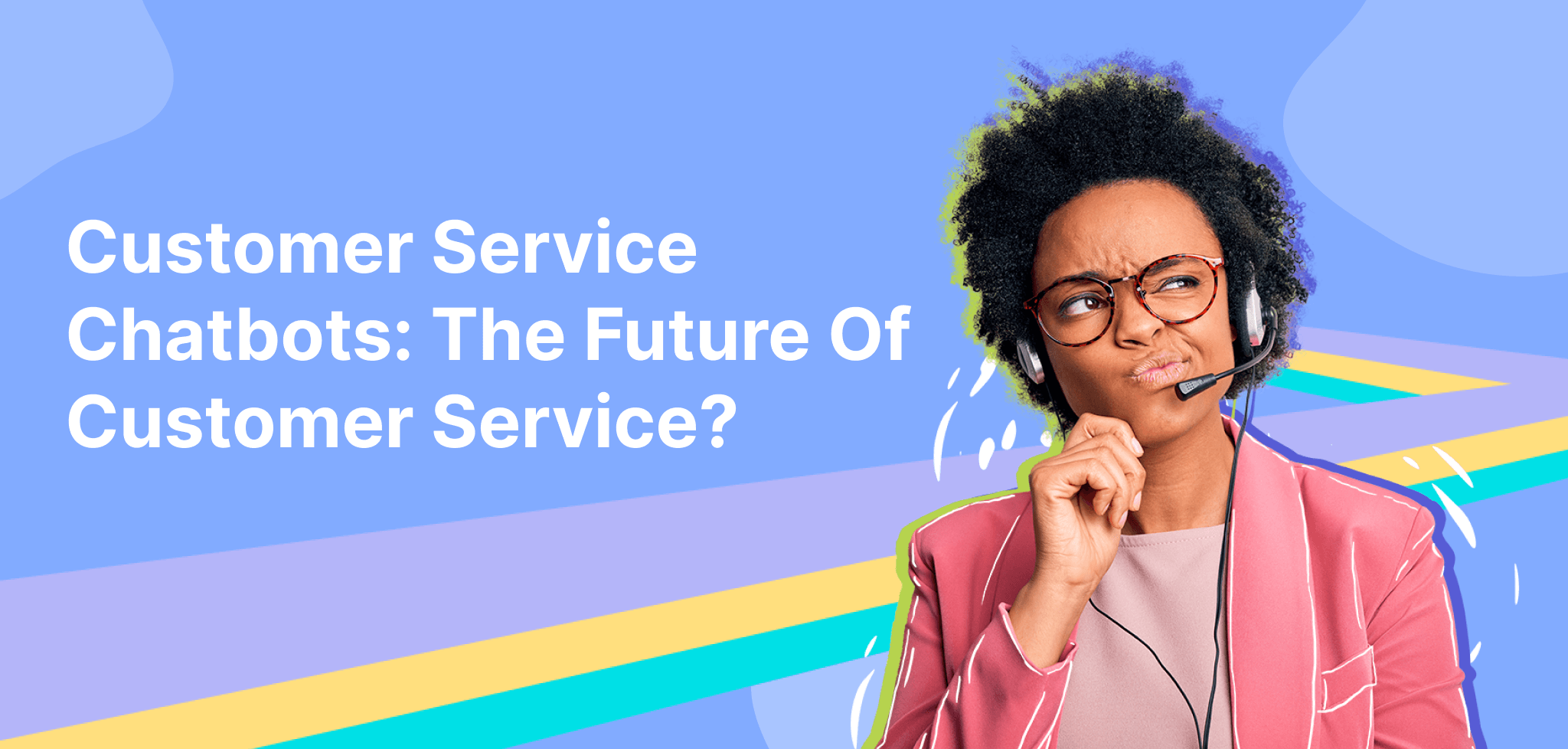In customer service, nothing beats a personal connection. That said, there are some customer service tasks that can now be automated using new artificial intelligence technologies, in the form of chatbots.
In fact, if you’ve ever used chat-based customer service, it’s likely it was with a chatbot – a software application that allows your customers to have an online, text-based chat conversation – and you may not have even realised!
- Chatbots can take the pressure off your live customer service team.
- Chatbots provide much-needed support to your customers, at any time of day or night.
- Chatbots can provide answers to commonly asked questions without taking resources away from your support team.
- Chatbots can help multiple customers at once.
While it’s true that nothing will ever replace the personal touch of a live customer service representative, chatbots can help enhance your customer service team by automating repetitive tasks, speeding up workflows and enriching the modern eCommerce customer experience.
Chatbots can be a great support to your existing customer service programme, but before we look further into this, let’s delve a little deeper into the world of the chatbot.
What is a Customer Service Chatbot?

A customer service chatbot is a chat service that uses artificial intelligence (AI) and machine learning to provide live chat to customers. It is programmed to be able to detect common questions using keywords and respond accordingly.
For example, if a customer asks, ‘How can I track my parcel?’ the chatbot will pick up key words such as ‘track’ and ‘parcel’ and respond with the corresponding text that helps the customer access their order status or tracking number.
In this way, chatbots are a type of self-help customer service, like FAQs or knowledge base pages, wherein the customer accesses the information to help themselves, rather than relying on a live customer service agent to do the legwork for them.
Unlike FAQs and knowledge base pages, the chatbot retrieves and delivers the relevant information directly to the customer, based on the question they’ve asked, so there’s no need for the customer to spend time reading through self-help documents.
Although chatbots are programmed to use your company’s knowledge base information, it’s provided to the customer instantaneously, giving your customer easy access to resolving simple customer service issues.
And because AI is smart and can be ‘trained’, chatbots can recognise different forms of the same question and key phrases, to provide the right information needed to solve the common customer problems relating to those phrases. The more a chatbot interacts with your customers, the better a tool it will learn to become!
Best of all, chatbots can also be programmed to use a specific tone, meaning that they can conform to cultural sensitivities, such as providing polite replies to the customer.
Even though it isn’t a real person that the customer is speaking with, politeness goes a long way to making a customer feel valued – even from a bot!
With today’s AI technology becoming increasingly sophisticated, a chatbot can often be indistinguishable from a live agent at the other end of the chat. That’s especially helpful to customers seeking a real solution to their customer service problems 24 hours a day.
What Are The Different Types of Chatbot?
Not all chatbots are created equal. There are many on the market today that help solve different business problems and choosing the correct one for your business is crucial.
Here are the different category types of chatbots available today:
1. Chatbots that automate customer support
These are the chatbots we’ve mostly been talking about. They help you automate the repetitive customer service tasks that take up a lot of valuable time from your live agents by offering smart chat solutions to common customer issues. Essentially, they are your FAQ or knowledge base page in a smart chat platform.
2. Chatbots for lead generation
These chatbots are specifically designed to capture leads from those who visit your website, allowing you to follow up and rank the leads as they are entered into your sales funnel.
Typically used within the enterprise software space, these types of chatbots ask questions about what you’re looking for and what they can help you with. Based on the information people provide, the chatbot then helps qualify leads, making your sales team’s job easier and ensuring you don’t miss out on any potential sales from web traffic.
3. Chatbots designed for eCommerce and order tracking
When it comes to order tracking, much of it consists of simple repetitive tasks that can be automated. By offering chatbots designed for tracking ecommerce orders, you’re giving your customers a simple way to track their orders, obtain shipping details and shipping status, without stressing out your team of live agents, who can reallocate their time to solving more complex customer issues.
4. Chatbots that collect feedback
Every business knows how important feedback is, especially when it comes to securing favourable online reviews for their product or service. Collecting feedback is definitely a process that can (and should) be automated. Many businesses already automate this using email but upgrading to feedback collecting chatbots can increase the number of customer reviews your business receives.
These chatbots can solicit surveys in a friendly tone via their easy-to-use chat interface. This makes customers more likely to provide feedback that can provide key stakeholders with useful insights into customer behaviour and product feedback. Typically, more-so than would be given through a traditional market research survey.
As you can see, while most chatbots focus on providing customer support, there are now specific types of chatbots available for various business needs, all related to the different ways a business interacts with its customers.
Whether your company sells to consumers (B2C) or to other businesses (B2B), the right type of chatbot can help with your overall customer strategy.
What Are The Differences Between a Chatbot And A Human?
Chatbots exist to help your human customer service team do their jobs better and more efficiently. They are never intended to replace live customer service as that would be impossible.
Instead, a customer service chatbot can be programmed to quickly and seamlessly automate the repetitive tasks that are a costly time-suck for your live customer service team. By doing so, chatbots help free up your team’s time to focus on more complex customer service issues. Those that need smoothing over and require a human element of empathy and complex problem solving to rectify.
For example, a chatbot may be able to quickly provide information about shipping details or the availability of a specific product within your catalogue; however, a human customer service agent will always be your customers’ go-to for those high-level issues that require finesse and the ability to make judgement calls to find solutions to complicated issues.
So, when we employ them, we must remember that a chatbot isn’t a replacement for genuine human interaction. Chatbots exist to help your human team do their job better by increasing efficiency and automating repetitive tasks – not to replace them. Nothing will ever beat a genuine I’m sorry or Thank you offered sincerely by one of your agents.
The Benefits Of Customer Service Chatbots

Not only are chatbots cool and futuristic, providing modern customer support, but they also solve many modern business problems and address common pain points.
Here are just some ways in which employing the use of a customer service chatbot can help your business:
- If you want to offer 24/7 customer service. Today’s digitally savvy customers are always online and that means that they want what they want, when they want it. Customer service is no exception. This can be tricky since most businesses aren’t set up to have customer service support teams working around the clock. This can be costly and impractical. So that’s where chatbots can help. Outside your team’s regular business hours, chatbots can ‘pick up the slack’ so to speak, by helping your customers solve their problems quickly and efficiently through intelligent chat.
- If your customer base is global. Successful brands offer their products to customers all around the world. But it can be a challenge providing customer service in multiple languages. Chatbots can help alleviate the cost associated with hiring multilingual customer service teams by offering chatbot support in multiple languages. This means that all your international customers are taken care of at any time of day or night.
- If you want to improve your multichannel solution. These days, customers use a number of channels to reach your business. This can include email, phone, and social media. By adding chatbots to your customer service toolkit, you have one more way to improve the customer experience. Thanks to chatbots, customers can get the answers they’re looking for, anytime they need.
A common thread that runs through all the above is that chatbots are cost-effective.
Customer service teams are expensive to hire, train and keep on the payroll around the clock. Particularly for businesses that are scaling, chatbots are a great cost-effective measure that can be put into place to efficiently scale their customer support programmes without excessively running up costs.
Related: 7 Ways to Reduce Customer Support Costs in 2021
Are There Any Disadvantages To Chatbots?
While chatbots are very helpful and can perform lots of impressive functions, it’s important to remember that they are also limited in their function!
Chatbots cannot and will never replace live customer service agents. Nor should they. Businesses shouldn’t be looking at chatbots as their only solution to customer service, but rather as a useful add-on to compliment other existing customer service channels, including live agents.
A robot will never be able to problem-solve like a human, so it’s important to remember that while chatbots help your team do their job better, nothing can replace a well-trained, motivated, and well-organised live customer service team.
Final Thoughts
Artificial intelligence is helping reshape the customer service landscape, giving traditional customer service a helpful boost. Chatbots will never replace traditional, live customer service, but when your business is ready to offer its customers more options, chatbots can be the way to go.
Chatbots offer powerful, practical support that can give your customers useful information at their fingertips while freeing up your agents’ time through the automation of repetitive tasks.
Adding chatbots to your customer service offerings will help your business become more tech-savvy, offering your customers another helpful, easily accessible channel for support with simple, common issues. They will also save your live agents time and help you scale up your customer support programme.
If you’re ready to take the plunge to support your team by offloading repetitive tasks, it may just be time to invest in a chatbot solution.
eDesk’s eCommerce helpdesk software helps online businesses respond faster and create happier customers. Book a demo to learn more or try it FREE for 14 days (no credit card needed).






